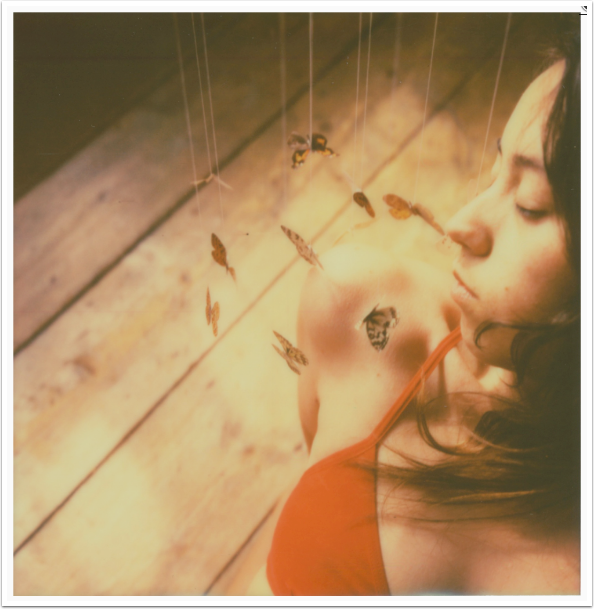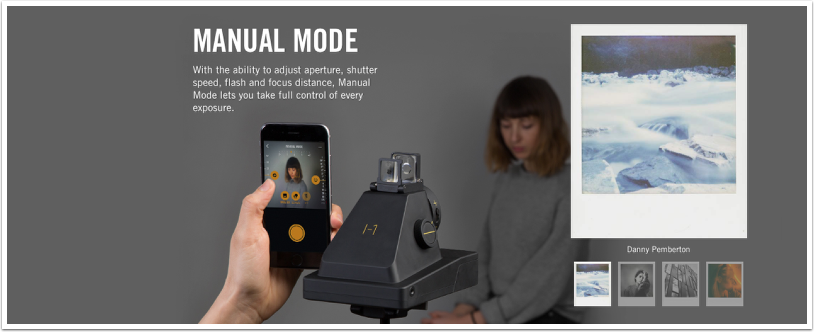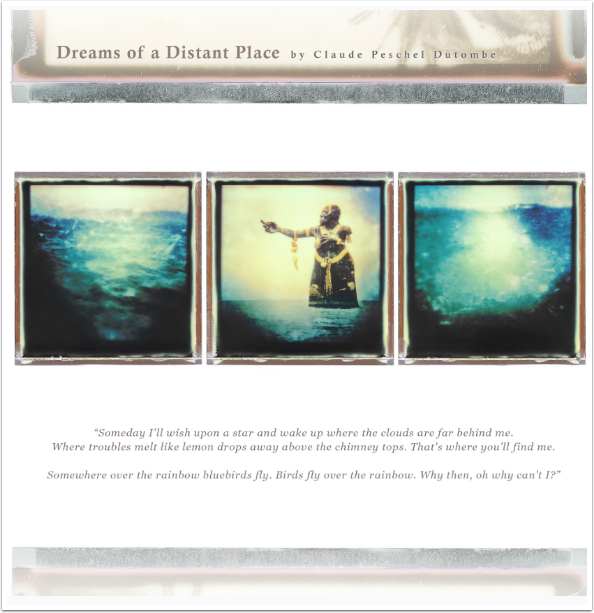‘Impossible Interview’ with Sarah Seene An Instant Photographer With A Difference
We’re delighted to be working closer with The Impossible Project team as we continue to branch out and expand our reach with all things related to mobile photography. Analog post-processing of mobile images is becoming more and more popular and we’re going to make sure our readers are fully briefed on this very exciting development.
The Impossible Project is in many ways leading the way, but there is also a growing community of mobile artists and photographers experimenting with other analog post processing techniques in an attempt to make their mobile images stand out even more, in galleries, magazines and the like and we have viewed some outstanding images and techniques.
A good deal of my formal photographic training (many years ago) was spent in a huge college darkroom and it is an area that I’ve always enjoyed, I think you will too. I also had a very close working relationship with Polaroid built up through my years as Technical Editor for various UK photography print magazines/titles.
Today we are publishing the first of a series of ‘Impossible’ Interviews, this time with Sarah Seene, she is not only an instant photographer (none mobile) but a director of short experimental films in which she explores themes of loneliness and the relation between reality and dreams. She is currently working in a documentary about an artist who creates sculptures with toys and dead animals. Twenty six year old Sarah was born in Belfort, in the east of France and she has been living in Poitiers, a small, beautiful city in the rural west of France, for four years.
This is an interview that was conducted by the team at Impossible and they have given us kind permission to republish it here. We think you will enjoy this very much…
Sarah Seene

©Sarah Seene
How long have you been shooting Polaroid/Impossible film?
Two years ago, a French photography shop organized a Polaroid contest and the theme was Your magic universe. This inspired me a lot. I never left my polaroid camera and I’ve created my ‘magic universe’!
What cameras do you use?
Since I began using Polaroid, a 1992 Polaroid 636 Close‐up camera, which my dear aunt gave me. When I was a child, I already used this same camera to photograph my grandmother’s animals. For a few months now, I’ve had a SX-70 Sonar camera and a Spectra camera: they’re my best friends now because the SX-70 is perfect for close-ups and I really love the Spectra rectangular size.

‘La poupee perdue (The lost doll) – ©Sarah Seene
Where do you shoot most often?
I often shoot outdoors, in natural surroundings, in France or other countries. I use old Polaroid films but I really love Impossible’s Color Shade films. I mostly use PX70 Color.
How would you describe your work?
I’m a dreamer, I’m thinking about my Polaroid projects every day when I’m walking, when I’m swimming, when I’m talking with people and even when I’m sleeping. My models, most of them female, are the ones that I love. I like inventing stories, universes, characters that inspire me. What interests me through my fabrication are feelings, inspired by people, nature and animals. My vision of instant photography is to create a new world with elements of reality.

‘Les liens de l’écume (Foam links)’ – ©Sarah Seene
Tell us a little about the four works you have chosen as your favourites?
The first picture Les liens de l’écume (Foam links) is a portrait of two of my best friends in Ile de Ré, in SW France. I love this because it reminds me a wonderful week-end with them. The second one Nuées d’hiver (Winter clouds) is one of my favorite dry lifts because I’ve changed the picture format by myself and it is exactly the picture I wanted to make. The third picture La poupée perdue (The lost doll) is one my favorite black and white picture because I had a lot of difficulties with Silver Shade films. The picture was taken in the botanical garden in Paris and my model is Agafia Polychunk, one of my photography friends. She inspires me a lot. The fourth picture La chasse aux papillons (The butterfly catching) is a self-portrait. It’s the first picture I made with my Spectra camera and yes, it’s a real butterfly stuck on the picture.
Do you have any helpful creative techniques or advice you would like to share?
I often use the dry lift technique but I have my little secrets.

‘La chasse aux papillons (The butterfly catching) – ©Sarah Seene
Do you have any upcoming exhibitions/publications?
Yes, this year is filled with exhibitions for me! I’ll exhibit in February in the En Face shop in PARIS. In March, I exhibit in Pau, in the south of France. In April, I have two exhibitions for Expolaroid in Nantes and La Rochelle and in May, I will start the 12.12 project exhibitions in Paris and Berlin.
Who are your favorite photographers?
Sarah Moon, Joël-Peter Witkin and Tim Walker.

‘Nuees d’hiver (Winter clouds) – ©Sarah Seene
What are you hoping for from Impossible during the next year?
A sepia film and films for Type 100 cameras!
Please help us…
TheAppWhisperer has always had a dual mission: to promote the most talented mobile artists of the day and to support ambitious, inquisitive viewers the world over. As the years passTheAppWhisperer has gained readers and viewers and found new venues for that exchange. All this work thrives with the support of our community.
Please consider making a donation to TheAppWhisperer as this New Year commences because your support helps protect our independence and it means we can keep delivering the promotion of mobile artists that’s open for everyone around the world. Every contribution, however big or small, is so valuable for our future.



2 Comments
David
Great article. Time for me to dust off my Polaroid collection and start shooting again. The Impossible Project is a great outfit…so glad that they’ve keep all of this alive!
Alexvisage
This is a very interesting interview and great works!